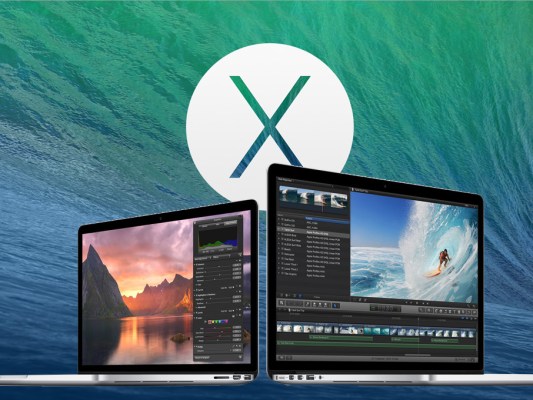According to legend, a vision delivered by the gods caused Julius Caesar to commit the ultimate act of insurrection by crossing the Rubicon. Splashing through this minor river dividing Caesar’s province from Italy proper committed him to an inevitable armed conflict with the Roman Senate.
Though Apple hasn’t set about conquering any empires, it has crossed its own Rubicon in one way: It has decided to offer its operating system OS X as a free download for all users and its iLife and iWork suites as free downloads with the purchase of a new iOS or Mac device. Thus, it has erased the boundaries between its hardware and software offerings for the first time in a decade.
Apple has offered its operating system free before. Until OS 9, updates were offered for its Macintosh computers as a matter of course. Patches fixed bugs and added features free of cost. When it shipped OS X for the first time, that all changed. Since then it has only offered one free update as a concession to customers who felt OS X 10.0 came out a bit half-baked with regard to the performance of its new Aqua interface.
But that’s only sort of accurate. Apple actually began offering a free version of OS X in 2007, when it began selling the iPhone.
“iPhone runs OS X! Why would we want to run such a sophisticated OS on a mobile device? It’s got everything we need,” said Apple CEO Steve Jobs at the time. “It let us create desktop class applications and networking, not the crippled stuff you find on most phones, these are real desktop applications.”
Specifically, the original iPhone ran an operating system internally called “OS X 1.0.” Now, Apple has unified its OS pricing strategy and offers free OS updates on both iOS and Mac hardware.
In many ways, this is a culmination of a path that Apple has been trundling down since it first began writing operating system software for its own hardware. I’ve joked before that Apple had a hardware + software epiphany in the 70s and that it took other companies like Microsoft decades to come to the same conclusion. That’s a simplification because Microsoft has actually been building hardware for a long time. The big difference is the level of commitment Apple gave to integrating its software with hardware, and the bet that it made in the 70s and 80s that paid off in spades when the mobile era rolled around.
Microsoft’s licensing method worked incredibly well for it for many years, and it deserves massive credit for making its Office and Windows offerings absolutely indispensable tools for the vast majority of business and personal users of computers for over two decades.
But, and there’s always a but, this strategy has taken a big hit in recent years, as our main computers have become the small screens in our pockets. Licensing an operating system for money went out of style overnight as Apple began offering one single product that combined hardware and software — and Google followed suit as best it could by offering Android to hardware partners for free.
Microsoft underestimated the massive importance that an integrated software and hardware strategy would take on when our primary computers became the ones in our pockets. Mobile devices have almost no tolerance for poor judgement when it comes to design or implementation. Users are less tolerant of touch latency, poor design decisions and other foibles, even if they can’t articulate it. The stakes are higher now and the gap that Google shot in the early days of this mobile age has closed. Android skated by as the only viable alternative early on, and Microsoft arguably produced a more polished and unique first product with Windows Phone. But it was very late, all things considered, and it’s been playing catch-up ever since.
Now, Apple has reset the expectation of millions of users with regards to paying for core operating system and productivity software. Both Google and Apple are now offering a holistic product with “everything you need to get started.” Meanwhile, Microsoft still makes the majority of its income on Office and Windows licensing.
To give it credit where it’s due, the Surface program was begun because Microsoft saw this coming. And the hundreds of millions of people who still rely on Windows and Office aren’t going to switch to Mac overnight just because the software is free. There’s an enormous amount of momentum in Microsoft’s model.
But Microsoft’s opposition has all but codified its strategies in one degree of firmness or another. Amazon co-opted Android and now makes Kindle tablet devices with Fire OS and will soon release a phone. Google purchased Motorola as a hedge against Samsung moving to do the same with its enormous Android market share. And Apple has eliminated the last remaining division between its software and hardware products: price.
Surface has now become an incredibly important effort for Microsoft, and its licensing business will now be under increased pressure from all sides. As Caesar was reported to have said, “the die has been cast” and the next few years will determine whether it can make the transition as its competitors have.
